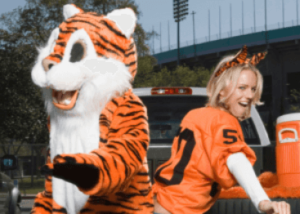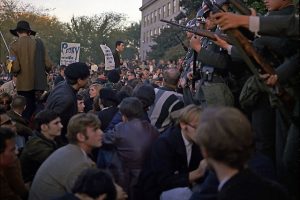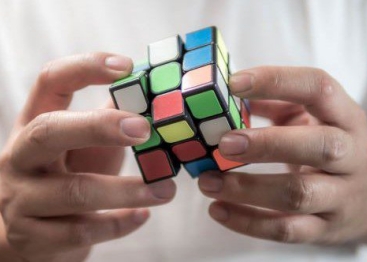10 Weird and Unsettling Facts About Facial Recognition
While facial recognition technology feels like a product of the digital age, its origins actually date back to the 1960s. Back then, early attempts at mapping facial features were rudimentary and experimental at best. But in today’s hyper-connected world, facial recognition has become shockingly common, from unlocking smartphones to scanning crowds in airports and public events. What many people don’t realize is just how advanced—and how widespread—the technology already is. Despite concerns over privacy, surveillance, and bias, facial recognition continues to expand rapidly. Yet it still carries surprising limitations that rarely make headlines. Understanding where it came from and what it’s currently capable of paints a clearer picture of the incredible potential—and unsettling power—this tech holds for the future.
10. Facial Recognition for Cats Is Real—And It’s Wildly Useful
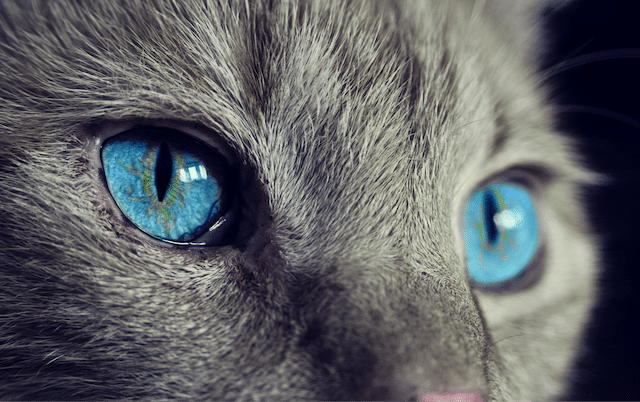
It might sound like a joke, but facial recognition for cats is not just real—it’s surprisingly practical. In a world where AI is tracking everything from human emotions to traffic patterns, it was only a matter of time before our furry companions got their own share of the spotlight. And yes, this tech isn’t just for security or unlocking phones—it’s now helping reunite lost pets with their humans.
Several pet-focused apps now use facial recognition to scan uploaded photos of lost cats and dogs. When someone finds a stray, they can snap a quick pic, and the system cross-references the animal’s face with entries in the database. If there’s a match, voilà—a heartwarming reunion in the making. It’s like microchipping without the chip.
But the innovation doesn’t stop at lost pets. Some smart gadgets, like AI-powered cat feeders, are integrating facial recognition to monitor which feline is at the bowl. This means you can get alerts if Fluffy skips dinner or if Whiskers is sneakily stealing seconds. By recognizing individual faces, the device can even shut off access for the repeat offender, keeping peace in your mini jungle.
It’s a wild intersection of tech and animal care, and it’s only scratching the surface. Want to dive deeper into how AI is reshaping the way we interact with pets?
9. The FBI’s $1 Billion Facial Recognition Flop: Only Matching Photos to Photos
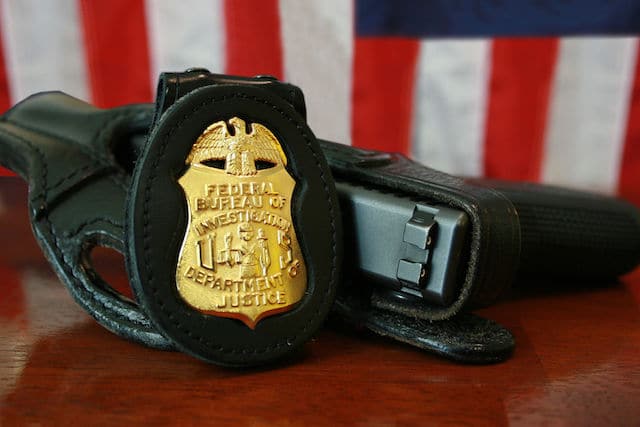
Law enforcement agencies around the world have long been interested in the potential of facial recognition technology. It holds the promise of quickly identifying suspects, solving crimes, and enhancing public safety. However, this technology also brings with it a host of complex issues, including legal implications, privacy concerns, and the potential for misuse. But before we delve into those deeper waters, let’s take a closer look at a rather embarrassing chapter in the history of facial recognition – the FBI’s $1 billion investment that yielded less than satisfactory results.
In the early days of the FBI’s foray into facial recognition, the technology was far from perfect. The Bureau poured approximately $1 billion into developing and implementing software that had a rather significant limitation. It could only match photos to photos under very specific conditions.
To make the software work, you needed to have one high-quality, front-facing, and clear photo of a person. Then, the computer could attempt to match it to another photo that met the exact same requirements. In essence, this was something that a human with a good eye and some attention to detail could potentially do as well. The only real advantage the computer had was the speed at which it could perform this task.
If the computer didn’t have a second, equally high-quality photo to compare against, then there was no match to be found. This limitation became painfully evident after the Boston Marathon bombing in 2013. The FBI had access to photos of the two suspects, and surveillance footage clearly showed them in the vicinity of the bombing. However, the facial recognition software was unable to identify them because the surveillance footage was of poor quality.
According to an FBI source, the billion-dollar software was essentially only useful for matching “driver’s license and passport photos to other driver’s license and passport photos.” This meant that in real-world situations where the quality of the available photos was less than ideal, the software was essentially useless.
The Boston Marathon bombing incident highlighted the significant gap between the expectations and the reality of facial recognition technology at the time. It raised important questions about the reliability and effectiveness of such technology, especially when it comes to critical law enforcement applications.
Despite the initial setbacks, the field of facial recognition has continued to evolve. In the present day, the technology has indeed improved significantly. There are now examples of facial recognition systems performing very well under a variety of conditions. However, the lessons learned from the FBI’s early experience serve as a reminder that technological advancements need to be carefully evaluated and tested before being deployed on a large scale.
8. Juggalo Makeup Can Outsmart Facial Recognition (Seriously)
It sounds like something out of a dystopian sci-fi film, but Juggalo makeup—the black-and-white face paint worn by fans of the Insane Clown Posse—has actually proven to disrupt certain types of facial recognition technology.
Here’s why: most facial recognition systems rely heavily on contrast patterns, especially around key facial landmarks like the jawline, eyes, and cheekbones. Juggalo makeup throws a wrench into the system by creating artificial contrast that misleads the software. The bold, graphic shapes—usually black over a stark white base—distort the facial features the AI tries to map, especially around the chin and mouth.
This curious glitch became public when companies like LiveNation and Ticketmaster began using military-grade facial recognition at concert gates. Turns out, Juggalos strolling in full face paint weren’t getting recognized. The tech simply failed to find consistent facial markers, effectively giving the makeup an unexpected side gig as privacy armor.
Of course, newer recognition systems using 3D mapping or infrared sensors might not be fooled so easily. But for some older contrast-based models, this DIY disguise still works. Whether you’re into cybersecurity hacks or just want a weird trivia fact to drop at parties, this is one for the books.
7. The Crucial Role of Eyebrows in Facial Recognition
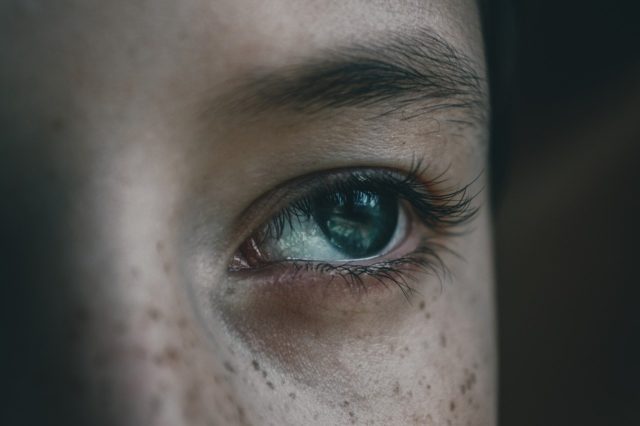
When it comes to personal appearance, eyebrows can be a matter of personal preference. Some individuals take great pride in having perfectly groomed, thick eyebrows that frame their eyes beautifully. For others, a more natural, perhaps even fuzzy, look of eyebrows resembling caterpillars shading their eyes is perfectly acceptable.
However, when it comes to the realm of facial recognition, eyebrows are far from being a minor detail. In fact, they play a role that is of utmost importance.
At first glance, it might seem that other facial features like eyes, noses, lips, and the overall face shape would be the primary elements for facial recognition. After all, these are the features that are often most noticeable and seem to carry the most distinctiveness. But biologically speaking, eyebrows hold a significance that cannot be overlooked.
The presence of eyebrows, which consists of hair, provides a unique contrast on an otherwise relatively hairless surface of the human face. This contrast is a major point of distinction when someone is looking at another person. Even from person to person, eyebrows contribute significantly to the understanding and recognition of another face. It’s not surprising, then, that facial recognition software also takes this crucial feature into account.
Historically, eyebrows haven’t always been at the forefront as a key identifier in various facial recognition softwares. However, the Covid-19 pandemic brought about a significant shift. With many people wearing masks, traditional facial features such as mouths, jawlines, and noses were no longer visible, eliminating them as reliable identifying features.
In response to this new reality, some researchers had to tweak the way their software worked. According to certain research findings, multiple factors are vital for accurately identifying a face. Eye color and shape, lip thickness, and, most importantly, eyebrow thickness all play crucial roles. The importance of eyebrows in this process cannot be overstated. They provide a unique characteristic that helps software distinguish one face from another, even in the challenging circumstances of mask-wearing during the pandemic.
6. Taylor Swift Quietly Used Facial Recognition to Spot Stalkers
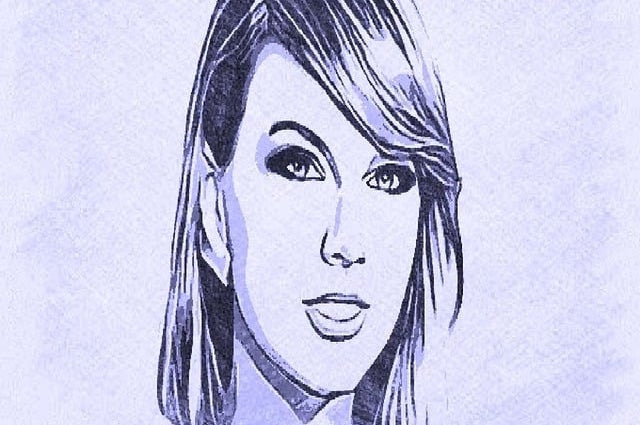
If you’ve ever attended a Taylor Swift concert and thought those kiosks showing dance footage were just harmless fan service—think again. Behind the scenes, they were doing more than hyping the crowd—they were scanning faces.
Back in 2018 at her Rose Bowl performance, Swift’s team quietly deployed facial recognition technology. Hidden inside a display booth that played video clips of her rehearsals, cameras were capturing images of fans’ faces in real-time. The goal? To cross-reference attendees against a database of known stalkers Swift had dealt with in the past.
The system was designed for preemptive security, alerting her team if a flagged individual showed up at the event. While this might sound like high-tech paranoia, for celebrities who’ve faced real safety threats, it’s a precaution that’s becoming more common.
And it’s not just Swift. Similar facial recognition tech has been spotted at NASCAR races, shopping malls, and sporting events, often with vague goals like “enhancing safety” or “improving the customer experience.” Translation: it’s doing both security and marketing surveillance.
By 2019, one facial recognition firm had reportedly gathered data on over 110 million event-goers. They claim the data isn’t stored long-term and isn’t linked to personal identities. But if you’ve been to a major event in recent years, it’s possible some anonymous company has your face—and a profile of what you like—on file.
Creepy? A little. Impressive? Definitely. Welcome to the new era of concert-going.
5. The Airport Vending Machine That Dispensed Coffee for Yawns: A Marketing Stunt with a Deeper Implication

In general, the concept of facial recognition technology often makes people uneasy at first. There are valid concerns about privacy, data security, and the potential misuse of such technology. However, there have been numerous attempts to win people over and convince them of the benefits and fun that facial recognition can bring. And in some cases, these efforts have been quite successful.
South African coffee company Douwe Egberts managed to do just that with a rather ingenious and attention-grabbing marketing stunt. They set up a unique coffee vending machine in a bustling airport. Now, this wasn’t your ordinary vending machine. It didn’t have a traditional payment system where customers could insert money or use a card to pay for their coffee.
Instead, the machine was equipped with cameras that had a very specific task – to identify people who yawned. As soon as the cameras detected a yawn, the machine would dispense a free cup of coffee. This was an unexpected and intriguing concept that quickly caught the attention of travelers passing through the airport.
At first, people were probably a bit confused when they saw the machine’s unusual behavior. But it didn’t take long for them to figure out what triggered the machine to dispense the free coffee. Once they clued in, the airport was filled with smiles and laughter. People were enjoying the novelty of getting a free cup of coffee simply by yawning, and it created a fun and lighthearted atmosphere.
However, there’s more to this story than just a fun marketing stunt. Beneath the surface, this experiment revealed an interesting aspect of human behavior and the power of technology. The vending machine was essentially conditioning people to produce a desired response – yawning. By offering a reward (free coffee) for a specific action (yawning), the company was able to influence people’s behavior in a subtle yet effective way.
This approach proved to be extremely successful for Douwe Egberts. It not only generated a lot of buzz and positive publicity for the brand but also demonstrated the potential of using facial recognition technology in marketing campaigns. The company realized that they could use this technology to encourage customers to engage in certain behaviors that they desired, whether it’s increasing brand awareness, promoting a product, or simply creating a memorable experience.
4. Some Hairstyles Can Fool Facial Recognition Software
Makeup isn’t the only way to throw facial recognition systems off their game. Turns out, your hairstyle—and how you wear it—can be just as effective.
Enter CV Dazzle, a concept developed by artist and technologist Adam Harvey as part of his Master’s thesis. The idea? Use a combination of hairstyles, makeup, and accessories to camouflage yourself from the most widely used facial recognition algorithms of the time. And it worked.
To the human eye, the look might just scream “avant-garde fashion”—think asymmetrical bangs, streaks of bright color, or geometric makeup. You might not guess someone is actively trying to become invisible to machines, but that’s exactly the point. Instead of going full-Juggalo with clown paint, CV Dazzle offers a high-concept, runway-ready way to confuse AI.
The trick is in breaking up facial symmetry, obscuring one eye, or altering the oval silhouette of the head—key areas that facial recognition software relies on. While these designs might not be something you’d wear to the grocery store (or maybe you would, no judgment), they prove that style can double as digital camouflage in an age of mass surveillance.
3. China Uses Facial Recognition to Thwart Toilet Paper Bandits
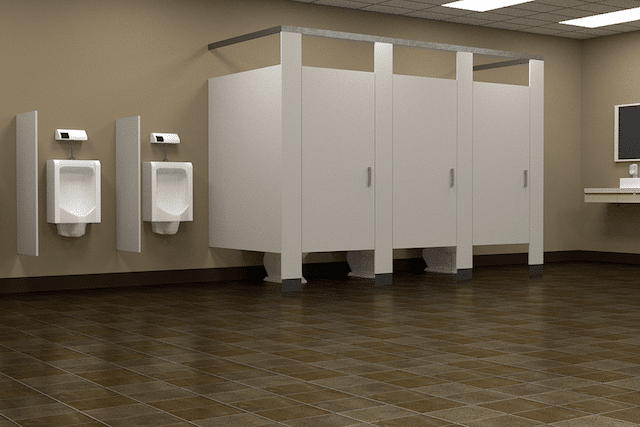
When you think of facial recognition, your mind probably jumps to crime prevention, airport security, or maybe even creepy targeted ads. But in Beijing’s Temple of Heaven, the technology took a hard left turn—straight into the public bathroom.
Back in 2017, the historic site, a popular tourist destination, installed facial recognition toilet paper dispensers. The mission? Stop the great toilet paper heist. Apparently, some visitors had taken a liking to stuffing their bags with public TP.
Enter the machine: it scans your face and dispenses exactly two feet of paper. Try coming back for seconds and it’ll recognize you and refuse to give up any more. Need extra in good faith? Too bad. You’re out of luck—unless you’re willing to wait nine minutes, at which point the machine resets and you can earn yourself another two-foot ration.
It’s not ideal for the bathroom-goers who just had a rough day, but it’s a creative deterrent for those looking to bulk-buy toilet paper the shady way. Surveillance society has officially reached the stalls.
2. Malls and the Controversial Use of Facial Recognition to Gather Shoppers’ Biometric Data
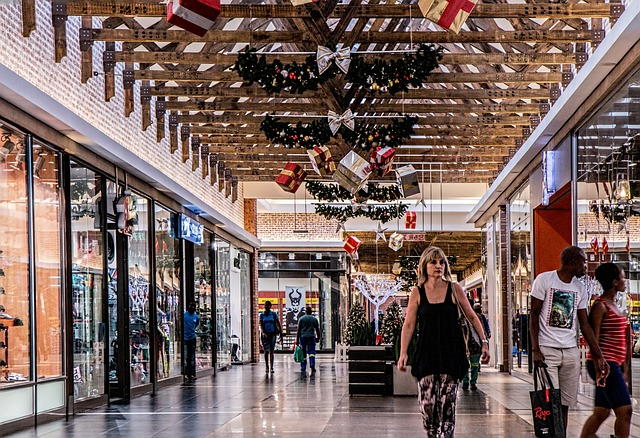
We’ve previously touched on the topic of malls in relation to Taylor Swift, but now it’s time to delve deeper into a rather concerning issue that’s more widespread than many people might suspect. Have you ever noticed one of those convenient mall directory kiosks that allows you to search for maps of the mall layout and locate specific stores? Well, there’s a strong possibility that if your local mall has such a kiosk, it’s not just providing helpful directions. In fact, there’s a good chance that facial recognition software is running quietly in the background.
Imagine this: as you stand in front of the kiosk, looking for the quickest way to your favorite store, a camera is trained right on you and every other shopper passing by. This isn’t just some far-fetched scenario; it’s a reality in many malls. And the implications of this are quite significant.
In 2018, a couple of Canadian malls found themselves in hot water over this very issue. Customers were outraged when they discovered that they had been photographed without their knowledge or consent. The malls had failed to inform the public that facial recognition technology was in use and, more importantly, what the purpose of this surveillance was.
Two years later, an in-depth investigation revealed the extent of the problem. It was discovered that the company owning these malls had been using this same technology in a dozen malls across the country. In total, they had collected the images of an astonishing 5 million shoppers. This raised serious concerns about privacy and the ethical use of such technology.
The company, however, tried to downplay the situation. They claimed that their intention was solely to track foot traffic within the malls. According to them, they were only collecting non-identifiable information such as age and gender for analysis purposes. But the story didn’t end there. It was also revealed that they had collected video and even audio footage. When questioned about this, the company stated that it was just part of a test phase.
The mall’s attempt to justify their actions by claiming that they had informed customers through stickers on doors, stating that cameras were being used for “safety and security,” didn’t hold up. The privacy commissions investigating the matter were not convinced. They argued that simply mentioning cameras for safety purposes didn’t excuse the fact that the actual cameras were harvesting biometric data. This data was being used to make assumptions about shoppers’ ages, genders, and even shopping habits.
This incident highlights the growing concern surrounding the use of facial recognition technology in public spaces. While malls may argue that they have legitimate reasons for using such technology, it’s crucial that they obtain proper consent from shoppers and are transparent about how the data will be used. After all, consumers have a right to know what information is being collected about them and how it will be protected.
1. Chinese Police Wear Facial Recognition Sunglasses Like It’s a Spy Movie

If you thought facial recognition tech was limited to unlocking your phone or tagging friends in photos, think again. In 2018, police officers in China started wearing sunglasses with built-in facial recognition—yes, like something Q would give James Bond, except real.
These high-tech specs come equipped with a tiny camera in the frames that can scan faces in a crowd and instantly compare them to a police database. If there’s a match—say a wanted criminal or someone using a fake ID—the officer gets an alert in real time. No need to check IDs or ask questions; the glasses know.
According to official sources, the tech was a success right out of the gate, helping police catch several suspects just by walking through train stations and public areas like it was a stroll through a lineup.
Of course, there have been whispers that the technology could be used for… less noble reasons. Like identifying political dissidents or profiling everyday citizens. But surely no government would ever use high-end surveillance gear for anything other than safety. Right?







